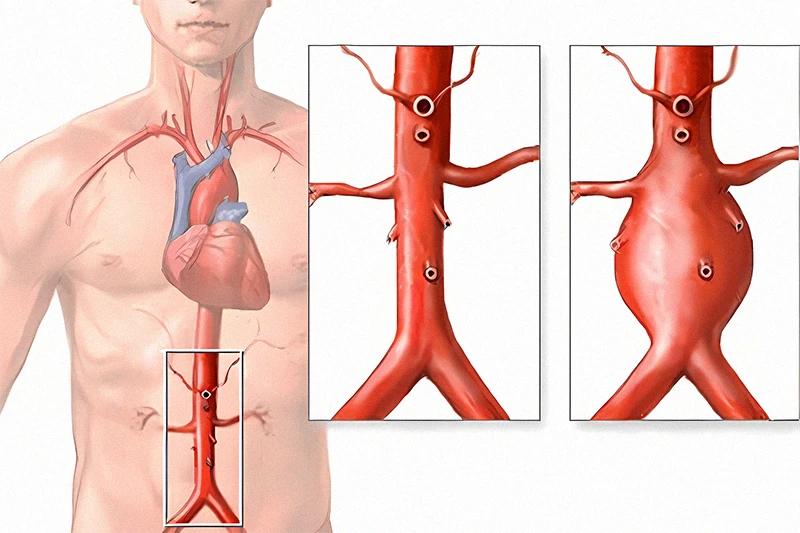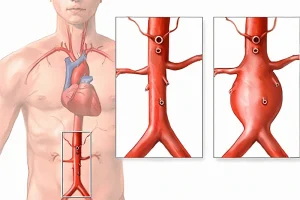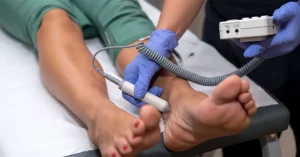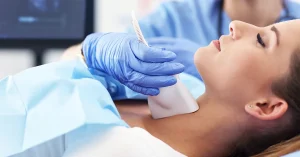Imagine meeting for the first time at the VenArt Clinic, a place where you come not just to solve a health problem, but also to understand what’s going on with your body. To feel comfortable, supported and understood. As medical professionals, we want every patient who walks through our doors to feel like part of a family. For us, every consultation and every conversation is not just medical paperwork, but also a chance to build trust and a lasting relationship with the patient we want to help. We aim to become partners in your journey to health, offering you not just treatments, but knowledge, so that you better understand how to keep your heart and body healthy.
What is an aortic aneurysm?
You may have heard of aneurysms but never understood exactly what they are. It’s not a complicated medical term. Aortic aneurysm is a dilation of the aorta that becomes larger than normal. This can put pressure on its walls. It can happen in different areas of the aorta, but most commonly in the part that leaves the heart or in the abdomen.
Types of aortic aneurysm
Every aneurysm is different, as is every patient who crosses our doorstep. Maybe you have an ascending aortic aneurysm or maybe an abdominal one. It doesn’t matter where it starts, the important thing is that it’s treatable.
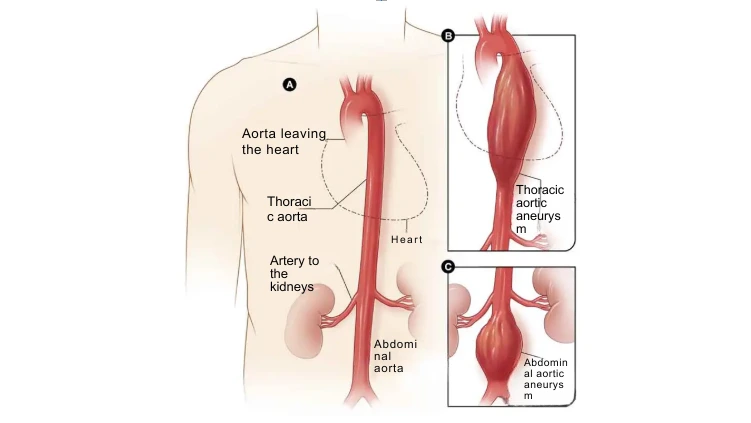
Ascending aortic aneurysm
An ascending aortic aneurysm affects the part of the aorta that leaves the heart. If that sounds a little scary, rest assured. Your doctor will use the right tools to detect and treat this problem before it gets worse. Early treatment can always make a difference.
Abdominal aortic aneurysm
This is the most common type of aneurysm. If you’re wondering if the symptoms you’ve been feeling – that unexplained pain in your abdomen or back – could be related, well, it could be a red flag. Your doctor will clearly explain why you are having those symptoms and how to prevent the aneurysm from rupturing.
Thoracic aneurysm
This type of aneurysm forms in the upper section of the aorta in the chest. You can recognize the symptoms of a thoracic aneurysm if they are similar to those of other heart conditions, such as chest or back pain.
Aneurysm Symptoms and Warning Signs
When your body is trying to send you subtle messages, such as a pain in your chest, a throbbing sensation in your abdomen, or a persistent cough, it’s important not to overlook any details. When these symptoms appear, it’s a good idea to talk to a specialist. Don’t leave anything to chance and make sure you get the attention you need, even if the symptoms seem unimportant.

Causes of aortic aneurysms
Is your blood pressure a little high, do you smoke or suffer from other diseases or harmful habits? All of these factors can adversely affect your heart and blood vessels and increase your chances of developing an aortic aneurysm.
Here are the main causes of aortic aneurysm:
- High blood pressure: This weakens the aortic wall. Age and hypertension are major risks for thoracic aortic aneurysm;
- Atherosclerosis: Plaque builds up on arteries, making them stiff. Extra pressure can cause them to weaken and dilate. Hypertension and high cholesterol are risk factors;
- Genetic causes: Aortic aneurysm in young people often has genetic origins. Marfan syndrome and other genetic disorders such as Ehlers-Danlos, Loeys-Dietz and Turner increase the risk of thoracic aortic aneurysm;
- Inflammatory diseases: Giant cell arteritis and Takayasu’s are linked to thoracic aortic aneurysms;
- Aortic valve problems: People with bicuspid aortic valve have a higher risk of thoracic aortic aneurysm;
- Untreated infections: Although rare, thoracic aortic aneurysms can be caused by infections such as syphilis or salmonellosis;
- Trauma: Accidents can lead to thoracic aortic aneurysms in rare cases;
- Age over 65.
Preventing an aortic aneurysm
We recommend some preventive measures you can take to reduce your risk of developing this condition:
- Lifestyle and risk factors;
- Healthy eating: Adopting a balanced diet, rich in fruits, vegetables, fiber and low in saturated fat and cholesterol, can help maintain aortic health and prevent aortic aneurysm;
- Regular exercise: Regular physical activity helps maintain a healthy weight and control blood pressure, two key factors in preventing aortic aneurysm;
- Smoking cessation: Smoking is a major risk factor for the development of aortic aneurysm. Quitting this habit can significantly reduce the risk;
- Blood Pressure Control: High blood pressure can contribute to aortic aneurysm formation. It is important to monitor and control your blood pressure through diet, exercise, and medication if necessary;
- Cholesterol Monitoring and Control: High cholesterol levels can lead to atherosclerosis, which can increase the risk of aortic aneurysm. Maintaining a healthy cholesterol level through diet and medication is crucial;
- Regular Checkups: People at increased risk of aortic aneurysm, such as men over 65 who smoke or those with a family history of aneurysms, should talk to their doctor about regular early ultrasound screening for abdominal aneurysm.
Diagnosing aortic aneurysm
When it comes to diagnosis, the doctors at our clinic use the most advanced methods to make sure they know exactly what you’re dealing with. From Doppler ultrasound to MRI and CT scans, every stage of diagnosis is designed to give you clear and precise answers. It’s extremely important to us that we explain everything in as much detail as possible so that you feel comfortable with every decision you make.
Diagnostic methods at VenArt Clinic for aortic aneurysm include:
- Doppler ultrasound;
- Computed tomography (CT);
- Magnetic resonance imaging (MRI).
These diagnostic methods are essential for identifying an aortic aneurysm, assessing its size and worsening, and planning appropriate treatment. It is important to establish the diagnosis as early as possible to effectively manage the condition and prevent serious complications associated with aortic aneurysm. Schedule your consultation.
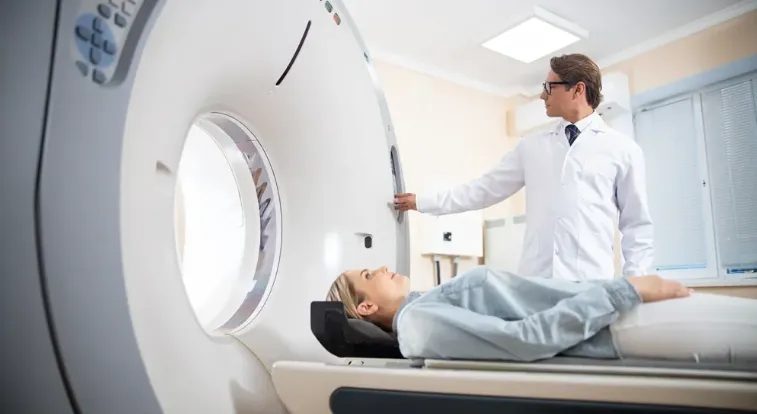
Our detailed analysis:
Doppler ultrasound: is one of the most widely used diagnostic methods for aortic aneurysm. Therefore, this non-invasive procedure uses ultrasound to create images of the blood flow in the aorta and to detect any abnormal dilation of the aortic wall.
Computed tomography (CT): A CT scan, on the other hand, can provide detailed images of the aorta and can help determine the size, shape and location of an aortic aneurysm. In addition, this method is useful for accurate assessment of aneurysms and adjacent structures.
Magnetic resonance imaging (MRI): MRI uses strong magnetic fields and radio waves to create detailed images of the aorta and surrounding structures. This method can provide additional information about the aortic aneurysm and may be helpful in treatment planning.
Treatment and Intervention
Treatment for aortic aneurysm varies depending on the size and rate of growth of the aneurysm. In a small, slow-growing aneurysm, regular medical monitoring may be sufficient. However, for large or fast-growing aneurysms, we recommend surgery.
Aortic aneurysm repair
Endovascular aneurysm repair (EVAR) is a minimally invasive procedure used to treat aortic aneurysms. EVAR has become more common than open surgery for abdominal aortic aneurysms because of reduced risks and faster recovery.
Recommended article: Endovascular aortic aneurysm repair (EVAR)
At VenArt Clinic, you can benefit from specialized services for the diagnosis and treatment of aortic aneurysms. With our top experts, you are assured of the best care. So, whether you need surgery for an ascending aortic aneurysm or treatment for abdominal aortic aneurysm, we’re here to help. What’s more, we’re committed to providing you with transparency about the costs. If you would like to know details such as costs for abdominal aortic aneurysm surgery, our team is available to assist you.
References:
Prof. Dr. Jérôme Cau – Outcome After Open and Laparoscopic Aortic Aortic Surgery in Matched Cohorts Using Propensity Score Matching
J Transl Int Med – Aortic aneurysm
Endovascular aneurysm repair: minimally-invasive endovascular surgery used to treat pathology of the aorta, most commonly an abdominal aortic aneurysm
Statistics
To understand just how common and serious this condition can be, it is important to know that the risk of aneurysmal rupture during the natural course is about 3%. Each year, about 8-10 out of every 100,000 people experience a brain aneurysm rupture. These figures seem small, yet in the case of aneurysms that have already ruptured, globally, nearly 500,000 people lose their lives each year. You may also be surprised to learn that half of these deaths occur in people under the age of 50, dramatically affecting young people and active adults.
Of those who suffer a ruptured aneurysm, 30% lose their lives before they reach hospital, showing the severity and unpredictability of this congenital malformation. If you are wondering what happens to those who survive, well, 40% of them are left with severe neurological deficits that affect their quality of life, while only 30% recover with a satisfactory neurological status.
We therefore remind you how important it is to treat an aneurysm preventively before it ruptures. If it is treated before a rupture, the risk of death or severe neurological damage is much lower compared to an emergency medical intervention after the rupture has occurred.
VenArt expertise
Endovascular aneurysm repair (EVAR) is a minimally invasive procedure used to treat aortic aneurysms, the most common of which is abdominal aortic aneurysm (AAA). When the procedure is used to treat thoracic aortic aneurysms, it is called TEVAR.
Conclusion
Aortic aneurysm, whether we are talking about ascending aortic aneurysm or abdominal aortic aneurysm, requires specialized attention and care. It is vital to recognize the signs and refer to specialists to receive appropriate treatment.
At VenArt Clinic, you’re not just a patient in and out the door. You become part of a community that cares about your health, that monitors you closely and helps you get the right treatment and prevent long-term complications.
Consultant physician: Prof. Dr. Jérôme Cau and Dr. Marius Fodor
Frequently asked questions
How much does aortic aneurysm surgery cost?
The price can vary significantly depending on a number of factors specific to each patient, the type of surgery required, the complexity of the case, the length of hospitalization or the materials used.
How long does aortic aneurysm surgery take?
The length of aortic aneurysm surgery can vary considerably depending on several factors, the type of aneurysm, its location, the complexity of the procedure and the surgical technique used. In general, surgery for aortic aneurysms can take between 2 and 4 hours, but in more complex cases or if complications arise, the operation may take longer.
What is the treatment for ascending aortic ectasia?
Treatment for ascending aortic stenosis varies depending on the severity of the dilatation and the patient’s symptoms. Ectatic aortic dilatation is a mild enlargement or dilation of the aorta that is less severe than an aneurysm, but requires monitoring and, in some cases, treatment to prevent progression to an aneurysm.
Normal dimensions of the ascending aorta?
The normal diameter of the ascending aorta is between 2 and 3.5 centimeters.
What does it mean to have an enlarged aorta?
To have enlarged aorta means that the diameter of the aorta is larger than normal limits, i.e. more than 3.5 cm, indicating abnormal dilatation or enlargement. This condition may suggest the presence of an aortic aneurysm or other cardiovascular conditions.
What is aortic ectasia?
Aortic ectatia is a mild, diffuse dilation of the aorta that does not reach the size considered diagnostic of an aneurysm.

